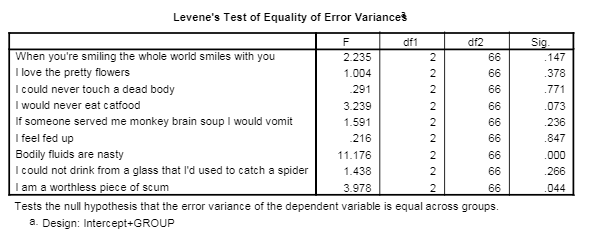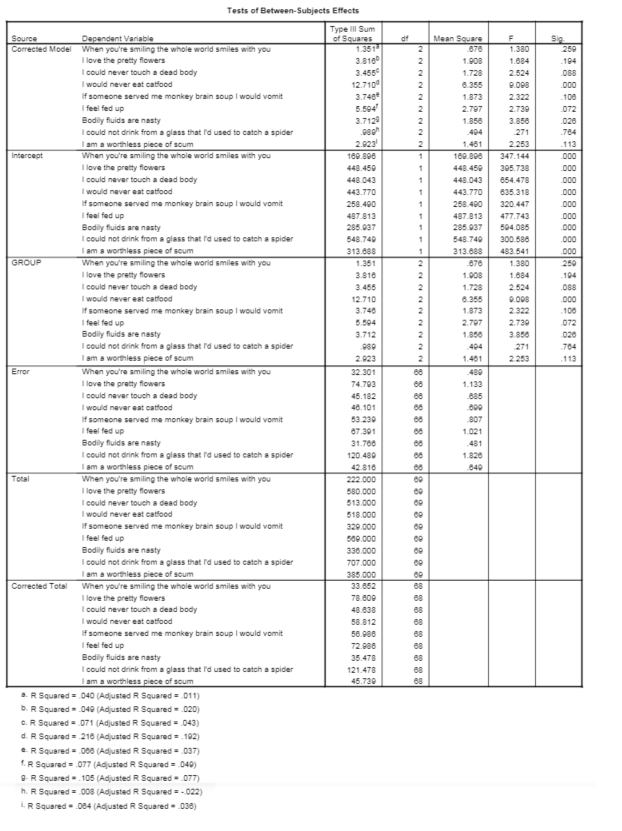A psychologist was interested in gauging the success of a mood manipulation during one of her experiments. She had three groups of participants who underwent different types of mood induction: disgust mood induction, negative mood induction and positive mood induction. After the mood induction, participants were asked to endorse nine statements relating to their mood (on a 5 point Likert scale from 1-disagree to 5-agree) : (1) When you're smiling the whole world smiles with you, (2) I love the pretty flowers, (3) I could never touch a dead body, (4) I would never eat cat food, (5) If someone served me monkey brain soup I would vomit, (6) I feel fed up, (7) Bodily fluids are nasty, (8) I could not drink from a glass that I'd used to catch a spider, (9) I am a worthless piece of scum. What analysis should be done to see if the mood inductions had an effect on responses to these 9 items. part of the output is shown below. Which statement best sums up this part of the output? 

Definitions:
Nail Matrix
The part of the nail bed that produces cells responsible for nail growth, located at the nail's base under the skin.
Calcium Absorption
The process by which the body assimilates calcium from ingested food or supplements into the bloodstream, which is crucial for bone health and metabolic functions.
Elevated Lesion
A raised area on the skin's surface, which could be due to various health issues, including infections, inflammations, or tumors.
Pus
A thick, yellowish or greenish fluid composed of dead white blood cells, bacteria, and tissue debris, indicative of an infectious process.
Q6: Ignoring the sport played, run a Kolmogorov-Smirnov
Q6: Which is the correct expression for the
Q8: What is the age range?<br>A) 21.6 yr<br>B)
Q9: The Greenhouse-Geisser correction refers to<br>A) Temperature control<br>B)
Q12: Imagine we wanted to investigate whether the
Q12: The fundamental calculations that underpin principal component
Q14: A doctor is concerned about the life
Q16: In the above example, the mean is
Q18: The UK coaching pyramids in rugby essentially
Q20: Based on a multilevel analysis, a chi-square